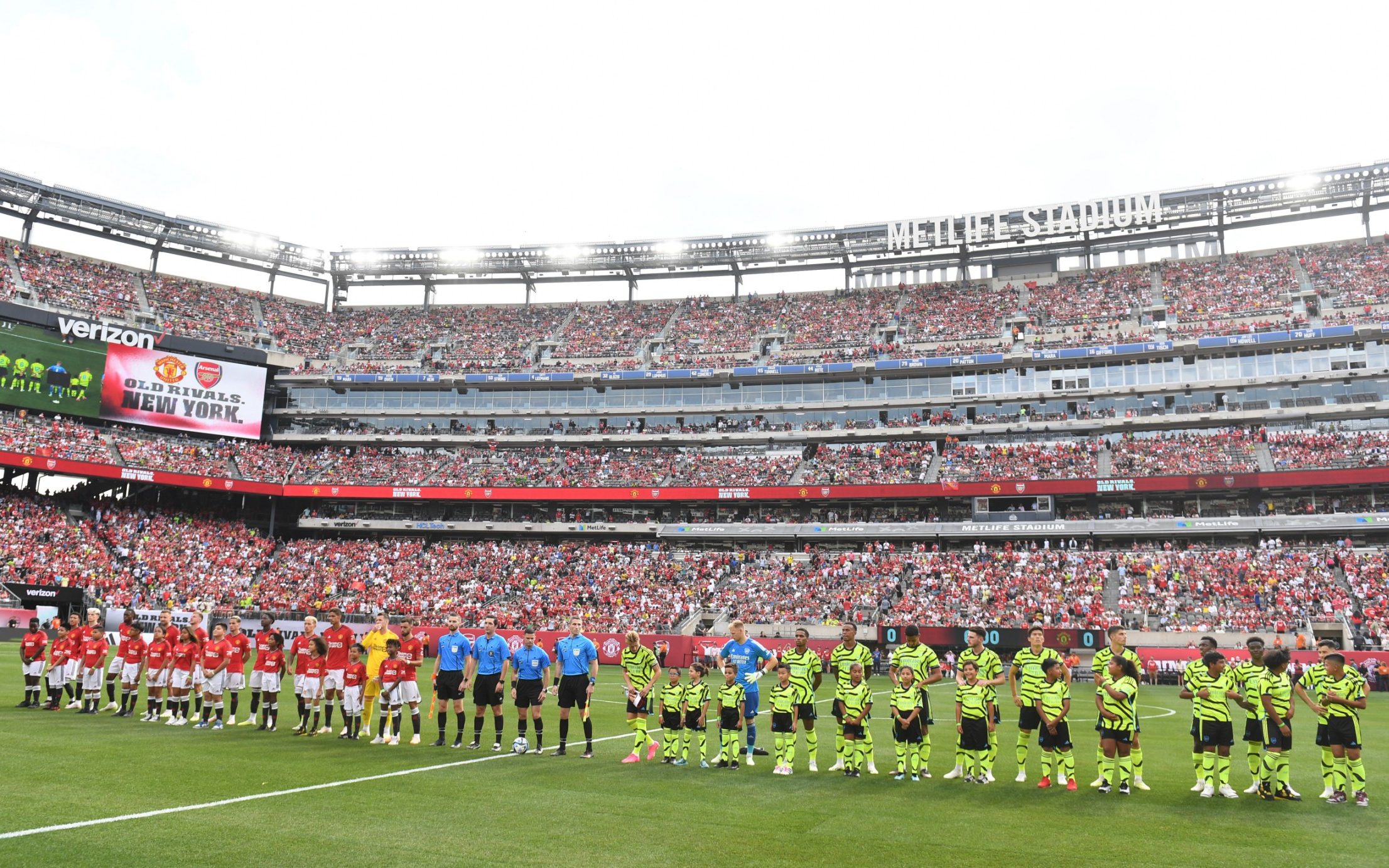Introduction
The FIFA Women’s World Cup, often referred to as the pinnacle of women’s soccer, is a global phenomenon that captures the imagination of fans worldwide. Since its inception in 1991, the Women’s World Cup has grown in stature and popularity, becoming an essential event in the world of sports. In this article, we will explore the history, significance, and far-reaching impact of the Women’s World Cup on the sport of soccer.
The FIFA Women’s World Cup has evolved into a sporting spectacle that transcends boundaries and defies stereotypes. Its journey from its inaugural edition in 1991 to the present day showcases the remarkable progress of women’s soccer on the global stage.
From the outset, the Women’s World Cup was more than just a tournament; it was a statement of recognition for female athletes who had long been in the shadows of their male counterparts. The tournament’s emergence was a testament to the talent and dedication of women in the sport, demanding that they receive the same level of respect, recognition, and support as their male counterparts.
Over the years, the Women’s World Cup has not only grown in stature but also in terms of quality and competitiveness. The level of play on display in the tournament has reached new heights, captivating audiences with skillful dribbling, precision passing, and breathtaking goals. The Women’s World Cup has become a showcase of the sheer talent and athleticism of female soccer players, dispelling any doubts about the excitement and intensity of women’s soccer.
The impact of the Women’s World Cup extends beyond the tournament itself. It has acted as a catalyst for change, spurring investments in women’s soccer infrastructure, professional leagues, and youth development programs. More countries are investing in the growth of women’s soccer, leading to increased opportunities for female players to pursue their dreams and reach their full potential.
Moreover, the Women’s World Cup has inspired young girls around the world to take up the sport. The sight of their heroes competing on the global stage has motivated countless aspiring soccer players to pick up a ball and dream of representing their country one day. This surge in interest and participation has a positive ripple effect on the sport, ensuring that women’s soccer continues to thrive and evolve.
The Women’s World Cup also plays a pivotal role in shifting societal attitudes toward women in sports. It challenges traditional notions of gender roles and shows that women can excel in sports at the highest level. It sends a powerful message to society that women’s sports deserve equal recognition and respect, both on and off the field.
In conclusion, the FIFA Women’s World Cup is not just a tournament; it’s a symbol of progress, empowerment, and the limitless potential of women in sports. It has grown from humble beginnings into a global phenomenon that celebrates the talent, determination, and passion of female soccer players. As each edition of the Women’s World Cup unfolds, it reaffirms its status as the premier event in women’s soccer and a driving force behind the continued growth and development of the sport.
Explore this link for a more extensive examination of the topic: Goal-line technology
The inaugural Women’s World Cup took place in China in 1991, marking a historic moment for women’s soccer. Prior to this, women’s international soccer lacked a global championship of the magnitude seen in men’s soccer. The tournament showcased the talent, skill, and passion of female athletes on a grand stage, setting the foundation for future editions of the Women’s World Cup.
The inaugural Women’s World Cup in China in 1991 was a watershed moment for women’s soccer, and its impact reverberates through the sport to this day. Before this historic event, women’s international soccer lacked the global recognition and platform that its male counterpart enjoyed. The Women’s World Cup changed that by providing a spectacular showcase for the talent, skill, and passion of female athletes on a grand stage.
A Breakthrough for Women’s Soccer:
The Women’s World Cup was not merely a tournament; it was a breakthrough that shattered barriers and defied stereotypes. It represented the realization of a dream that many female soccer players had held for decades — the chance to compete at the highest level of international soccer. The inaugural event laid the foundation for future generations of women to pursue their soccer aspirations with newfound hope and ambition.
Changing Perceptions:
One of the most significant impacts of the Women’s World Cup was its power to change perceptions about women’s soccer. It challenged outdated notions that women’s sports lacked competitiveness and excitement. The tournament displayed the same level of intensity, skill, and determination seen in men’s soccer, proving that women could excel on the global stage just as their male counterparts did.
Inspiring Young Athletes:
The Women’s World Cup quickly became an inspiration for young athletes worldwide. As they watched their heroes compete on television, young girls realized that their dreams of becoming professional soccer players were not only valid but also achievable. The tournament became a catalyst for increasing participation in women’s soccer at all levels, from grassroots to professional leagues.
Elevating the Women’s Game:
In the years following the inaugural Women’s World Cup, the women’s game experienced remarkable growth. National teams and clubs invested more resources in women’s soccer, leading to improved coaching, facilities, and player development. This investment elevated the overall quality of the sport, making it more competitive and exciting.
A Global Phenomenon:
With each subsequent Women’s World Cup, the tournament’s global popularity soared. Fans from around the world tuned in to watch the drama unfold, creating a massive following for women’s soccer. The Women’s World Cup has become a cultural phenomenon, drawing attention not only to the sport but also to the issues of gender equality and women’s empowerment.
Continuing Progress:
As we look to the future, the Women’s World Cup continues to grow in significance. It has inspired conversations about gender equity in sports, encouraging further advancements in equal pay and opportunities for female athletes. The tournament’s enduring legacy is a reminder that progress is ongoing and that the women’s game will continue to flourish.
In conclusion, the inaugural Women’s World Cup in 1991 was a defining moment for women’s soccer. It shattered barriers, changed perceptions, and inspired a new generation of female athletes. The tournament’s enduring impact on the sport extends far beyond the field, touching issues of gender equality and social change. As the Women’s World Cup continues to evolve, it carries the torch of progress and empowerment, showcasing the incredible talent and resilience of female athletes on the world stage.
For a comprehensive look at this subject, we invite you to read more on this dedicated page: US Soccer Timeline

Since that groundbreaking moment, the Women’s World Cup has grown exponentially. The tournament is now held every four years, featuring teams from around the world competing for the coveted championship. Its global reach is undeniable, with millions of fans tuning in to watch the matches and support their favorite teams.
The Women’s World Cup has played a crucial role in elevating the profile of women’s soccer. It has provided female athletes with opportunities to showcase their talents and inspire a new generation of players. The tournament has also shattered stereotypes and demonstrated that women’s soccer can be as exciting, competitive, and skillful as men’s soccer.
Don’t stop here; you can continue your exploration by following this link for more details: Why Brands Should Embrace Women’s Sports—and the Rise in …

One of the most significant impacts of the Women’s World Cup is its influence on the development of women’s soccer at both the grassroots and professional levels. The tournament has led to increased investment in women’s soccer infrastructure, coaching, and player development.
Countries that have traditionally lagged behind in women’s soccer have witnessed a surge in interest and investment after strong showings in the Women’s World Cup. The tournament has led to the creation of professional women’s leagues and the development of youth academies, paving the way for more opportunities for female soccer players.
The Women’s World Cup, beyond its thrilling matches and inspiring displays of skill, has wielded a profound influence that extends far beyond the boundaries of the tournament itself. One of its most significant impacts lies in the transformation it has sparked within the world of women’s soccer.
At the grassroots level, the Women’s World Cup has ignited a grassroots revolution. Young girls and aspiring athletes worldwide have found newfound inspiration in the performances of their heroes on the global stage. The tournament has become a catalyst for increased participation in the sport, with young girls and boys alike dreaming of representing their countries one day. The ripple effect of this aspiration can be seen in the surge of youth soccer programs and academies dedicated to nurturing the talents of the future generation of female soccer players.
Moreover, the Women’s World Cup has prompted significant investments in women’s soccer infrastructure. Countries that were once overlooked or underfunded in women’s soccer have witnessed a change of tide. Strong showings in the tournament have convinced governing bodies and private investors to channel resources into improving facilities, coaching standards, and player development programs. This injection of capital has not only elevated the quality of play but has also ensured that female athletes have access to world-class training and development opportunities.
The Women’s World Cup has not only inspired young players but has also opened doors for professional careers in women’s soccer. The tournament’s success has encouraged the creation and growth of professional women’s leagues in many countries. These leagues provide female players with the opportunity to pursue soccer as a full-time career, which was once a distant dream for many. The rise of professional women’s soccer has not only increased the talent pool but has also elevated the visibility and marketability of the sport.
In addition to professional leagues, the Women’s World Cup has played a pivotal role in the development of youth academies dedicated to grooming the stars of tomorrow. These academies focus on providing comprehensive training and support for young female athletes, enabling them to progress through the ranks and ultimately reach the international stage. As a result, more young girls have the chance to follow in the footsteps of their role models and pursue professional soccer careers.
In conclusion, the Women’s World Cup serves as a beacon of change and progress in the world of women’s soccer. Its influence on grassroots participation, infrastructure development, the growth of professional leagues, and the creation of youth academies has transformed the landscape of the sport. It has not only elevated the level of competition but has also empowered young girls to dream big, proving that the Women’s World Cup is more than just a tournament; it’s a catalyst for positive change, equality, and opportunity in the world of sports.
Looking for more insights? You’ll find them right here in our extended coverage: The effect of the video assistant referee (VAR) on referees’ decisions …

The Women’s World Cup has become a source of inspiration for aspiring female soccer players around the world. Young girls watch in awe as they witness female athletes competing at the highest level, proving that with dedication, talent, and hard work, they too can achieve their dreams on the soccer pitch.
The tournament has also empowered women in sports leadership roles, from coaches and referees to administrators and executives. As women continue to break barriers in soccer, the Women’s World Cup serves as a symbol of progress and gender equality in sports.
The Women’s World Cup stands as a beacon of hope and aspiration for young female soccer players worldwide. With each match, it offers not only a thrilling display of skill but also a powerful message: that the dreams of little girls with big soccer ambitions are entirely attainable. Aspiring players look up to their heroes on the pitch, knowing that the same dedication, talent, and hard work can lead to their own success stories.
Breaking Stereotypes: The tournament has shattered stereotypes about women’s sports, showing that women can compete at the highest level with the same intensity and passion as their male counterparts. This newfound visibility has inspired countless girls to pursue their passion for soccer with unwavering determination.
Empowering Female Leaders: Beyond the players, the Women’s World Cup has catalyzed a transformation in the sport’s leadership landscape. Female coaches, referees, administrators, and executives are emerging as influential figures, paving the way for a more inclusive and equitable soccer ecosystem. Their presence challenges long-held norms and stereotypes, proving that gender is not a barrier to success in any facet of the game.
Advocacy for Equality: The tournament also serves as a platform for advocating gender equality in sports. Players and advocates use their influence to push for equal pay, opportunities, and resources. Their efforts resonate far beyond the field, inspiring broader conversations about equity and justice in society.
Unifying Global Event: The Women’s World Cup is a truly unifying global event. It brings together people from diverse backgrounds and cultures, fostering a sense of camaraderie and shared purpose. The tournament transcends borders, languages, and politics, emphasizing the universal appeal of sports and the common dream of achieving greatness.
Role Models for Generations: The athletes who grace the Women’s World Cup stage become role models not just for this generation but for generations to come. They represent the embodiment of resilience, determination, and passion, qualities that extend far beyond the soccer pitch and into the realm of life itself.
In essence, the Women’s World Cup is more than just a soccer tournament; it’s a catalyst for change and a symbol of empowerment. It reminds us that progress in sports knows no gender boundaries and that, with unwavering dedication, the world of soccer, and indeed, the world at large, can become a place where dreams are not only realized but celebrated. The Women’s World Cup inspires us to stand together, break barriers, and champion equality, both on and off the field.
For additional details, consider exploring the related content available here Watching USWNT vs. Netherlands with USWNT legends – The Athletic

Conclusion
The FIFA Women’s World Cup is more than just a soccer tournament; it is a celebration of women’s athleticism, determination, and passion for the sport. It has become a global showcase for female soccer talent and a driving force behind the growth of women’s soccer worldwide.
As the Women’s World Cup continues to capture the hearts of fans and inspire generations of female athletes, it reaffirms its position as soccer’s premier tournament and a catalyst for positive change in the world of sports. With each edition, the Women’s World Cup takes another step toward advancing the cause of women in soccer and promoting gender equality in athletics, leaving a lasting impact on the beautiful game.
Additionally, you can find further information on this topic by visiting this page: 100 Women: Is the gender pay gap in sport really closing? – BBC …
More links
Additionally, you can find further information on this topic by visiting this page: FIFA expanded the 2023 Women’s World Cup to 32 teams. : NPR
